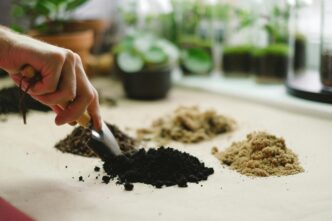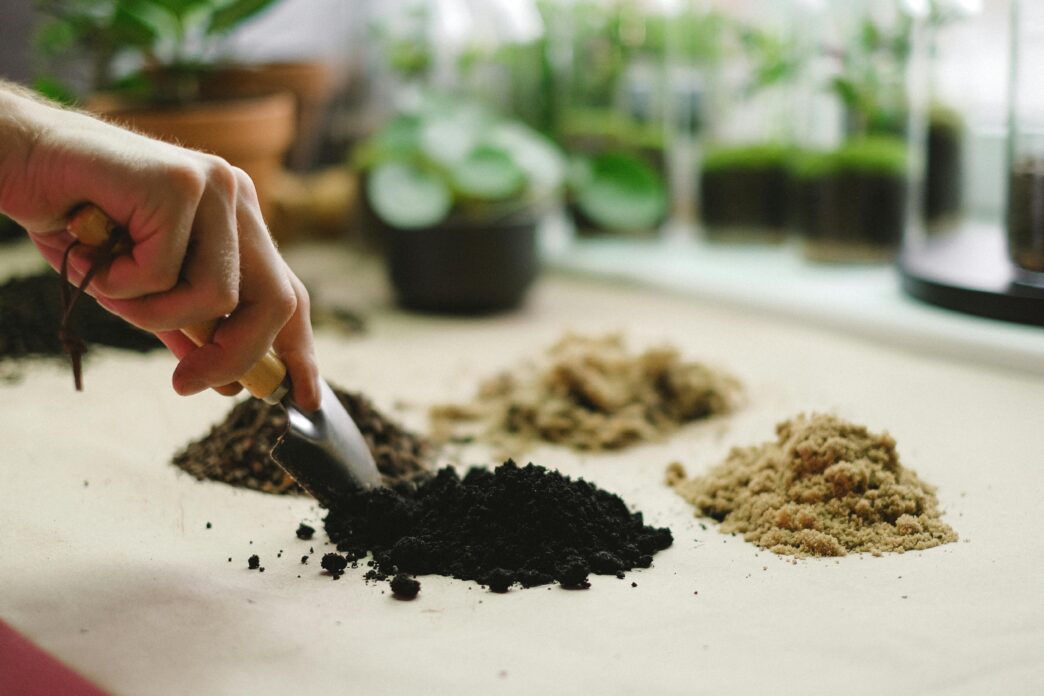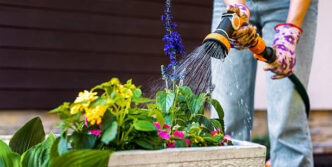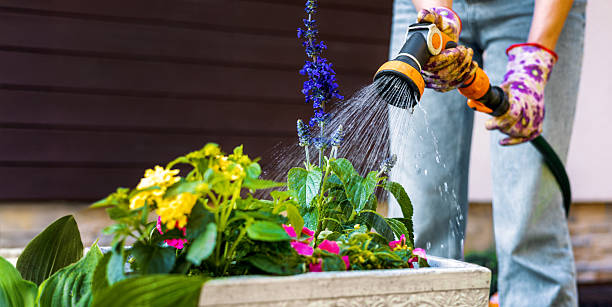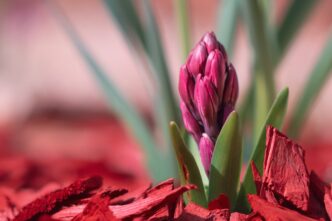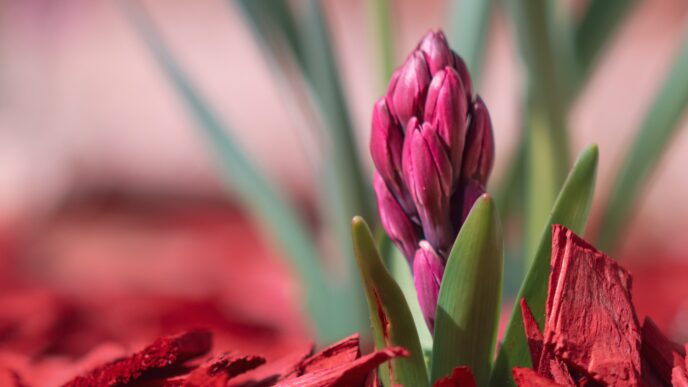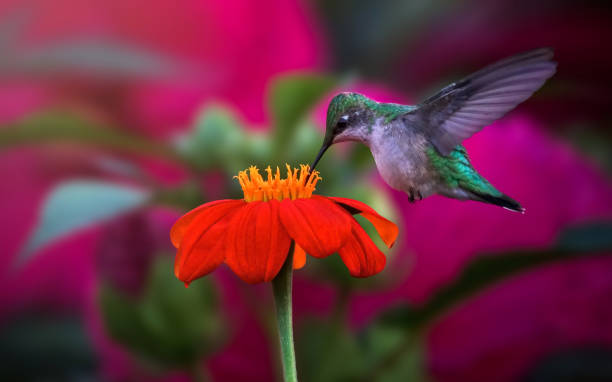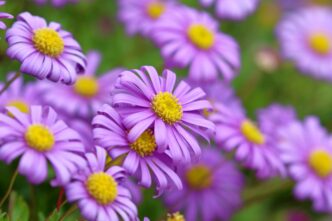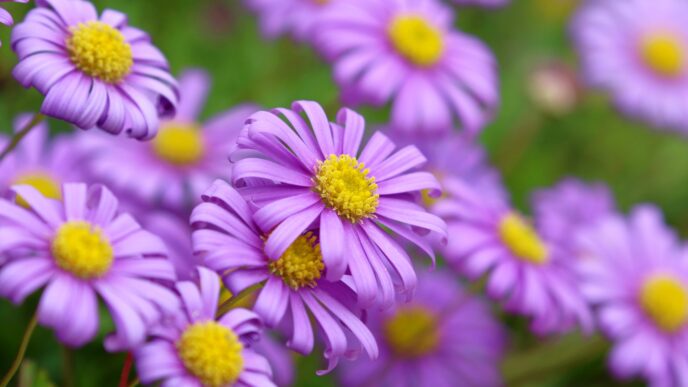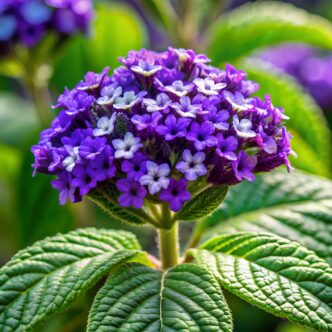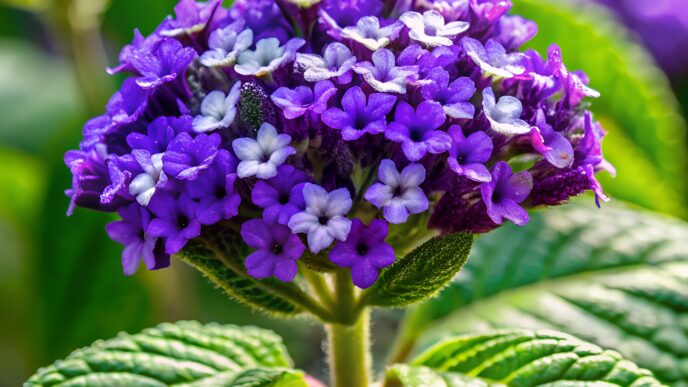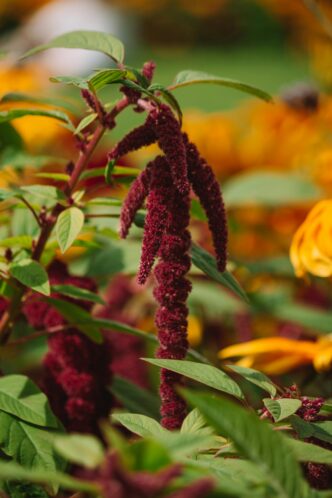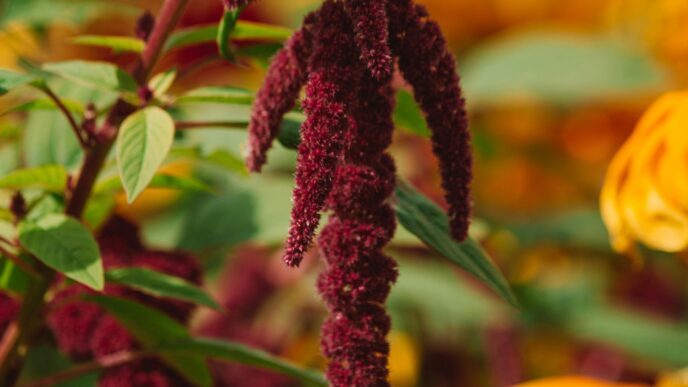Soil is more than just dirt—it’s the foundation of your garden. Healthy soil provides plants with the nutrients, water, and oxygen they need to thrive. Without the right soil, even the most carefully chosen plants may struggle. By understanding different soil types and how to improve them, you can set your garden up for long-term success.
In this guide, we’ll explore the main soil types, how to identify them, their pros and cons, and practical tips to make each one more productive.

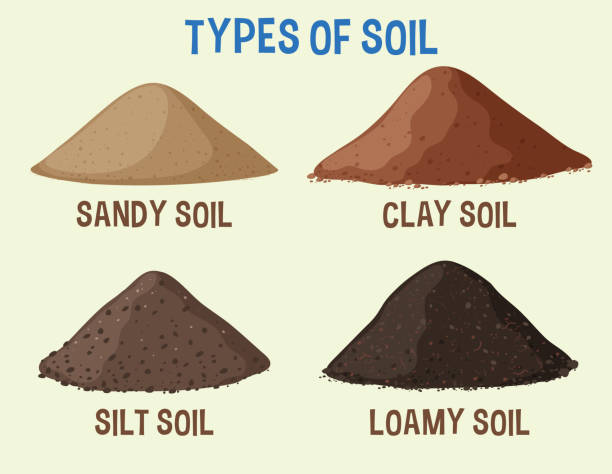
Why Soil Matters for Plant Health
- Nutrients: Soil is the main source of essential minerals like nitrogen, phosphorus, and potassium.
- Water Retention & Drainage: The texture of soil determines how much water it holds or releases.
- Root Growth: Healthy soil provides space and oxygen for roots to spread.
- Microbial Life: Rich soil supports beneficial organisms that help plants absorb nutrients.

The 6 Main Soil Types
1. Sandy Soil
Characteristics:
- Light, gritty texture.
- Drains very quickly and warms up fast in spring.
Advantages:
- Easy to work with and dig.
- Perfect for crops like carrots, lettuce, and potatoes that prefer loose soil.
Disadvantages:
- Poor at holding nutrients.
- Dries out quickly in hot weather.
Improvement Tips:
- Add compost, peat moss, or well-rotted manure to retain water.
- Mulch around plants to reduce evaporation.
- Use slow-release fertilizers to prevent nutrients from washing away.
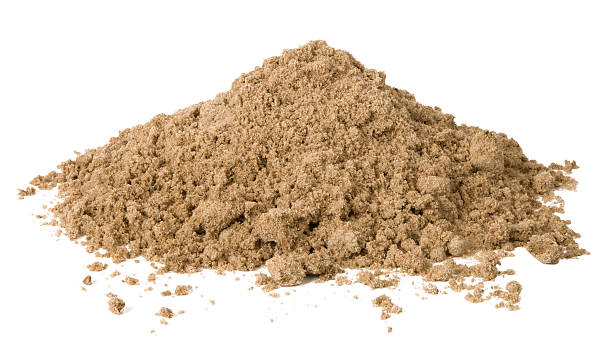
2. Clay Soil
Characteristics:
- Dense, sticky when wet, hard when dry.
- Retains water and nutrients well but drains poorly.
Advantages:
- Naturally fertile with high mineral content.
- Holds moisture, beneficial during dry spells.
Disadvantages:
- Easily waterlogged, causing root rot.
- Difficult to dig, especially in wet conditions.
Improvement Tips:
- Mix in coarse sand, organic matter, or gypsum to improve drainage.
- Build raised beds for easier management.
- Grow moisture-loving plants like asters, black-eyed Susans, or daylilies.
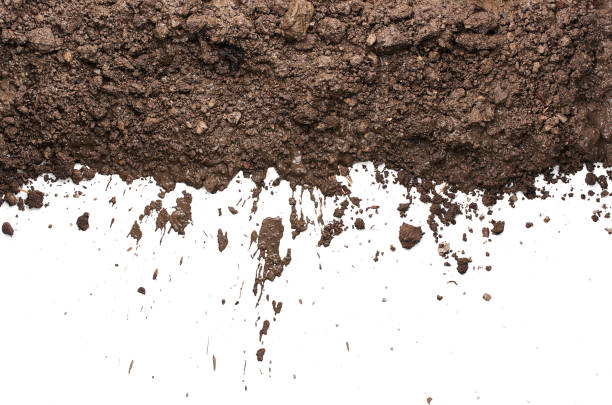
3. Silt Soil
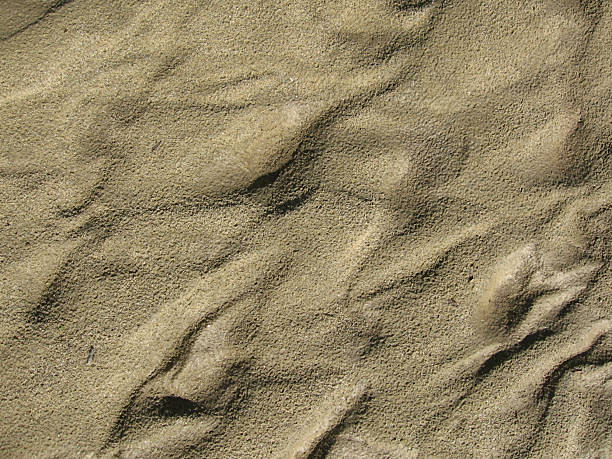
Characteristics:
- Smooth, soft texture.
- Retains moisture and nutrients better than sandy soil.
Advantages:
- Fertile and easy to work with.
- Great for vegetables, shrubs, and perennials.
Disadvantages:
- Can compact easily, reducing airflow to roots.
- Susceptible to erosion if left bare.
Improvement Tips:
- Add compost to maintain structure.
- Mulch or plant cover crops to prevent erosion.
- Avoid walking on beds to reduce compaction.
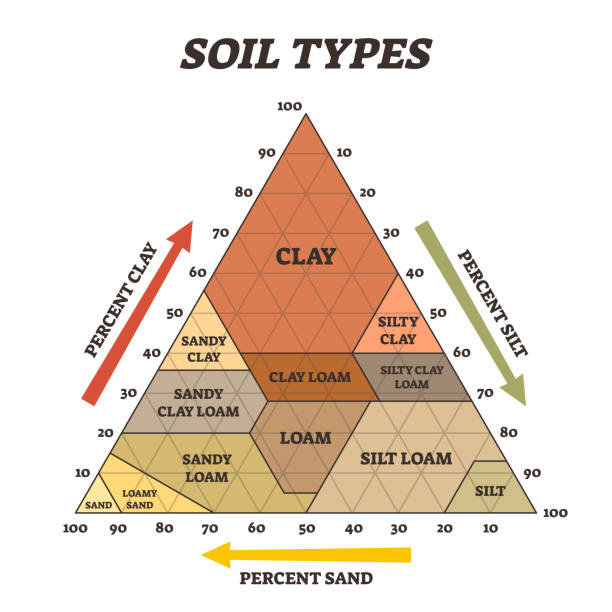
4. Loam Soil (The Gardener’s Dream)
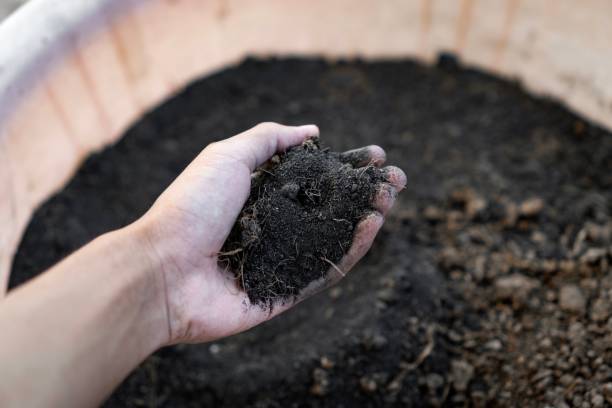
Characteristics:
- Balanced mix of sand, silt, and clay.
- Dark, crumbly, and nutrient-rich.
Advantages:
- Excellent drainage and moisture retention.
- Easy to cultivate and suitable for most plants.
- Holds nutrients while staying aerated.
Disadvantages:
- Needs ongoing organic matter to stay healthy.
Improvement Tips:
- Top-dress with compost each year.
- Rotate crops or plant different flowers to maintain soil health.
- Avoid overwatering, even though loam drains well.
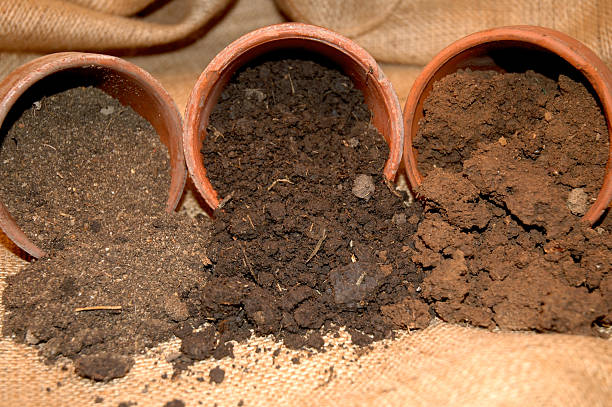
5. Peaty Soil
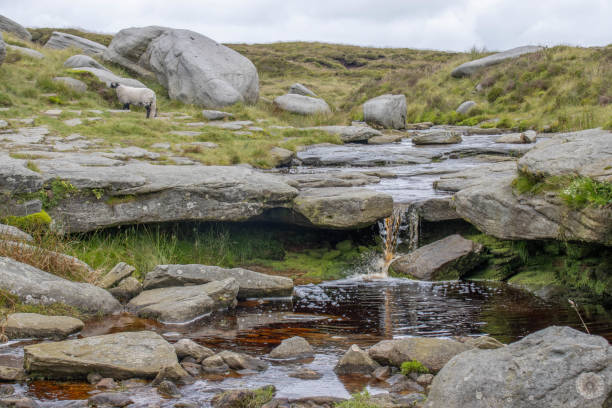
Characteristics:
- Dark brown or black, soft and spongy.
- Rich in organic matter and moisture.
Advantages:
- Retains water extremely well.
- Great for acid-loving plants like blueberries, camellias, and azaleas.
Disadvantages:
- Often too acidic for many plants.
- Can become waterlogged without proper drainage.
Improvement Tips:
- Add lime to reduce acidity if needed.
- Mix in sand or grit to improve drainage.
- Grow moisture-loving plants such as ferns and primroses.
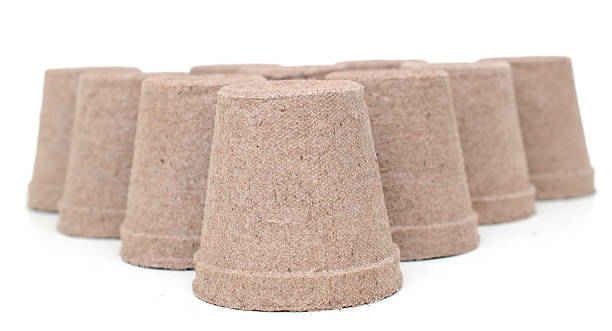
6. Chalky Soil
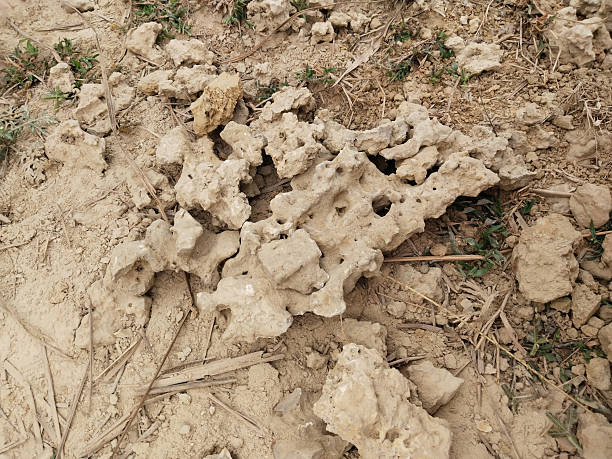
Characteristics:
- Stony, alkaline, and free-draining.
- May lack key nutrients like iron and magnesium.
Advantages:
- Great for Mediterranean herbs like lavender, rosemary, and thyme.
- Rarely waterlogged due to fast drainage.
Disadvantages:
- Can cause nutrient deficiencies (yellow leaves are a common sign).
- Dries out quickly in summer.
Improvement Tips:
- Use organic matter to improve fertility.
- Add fertilizers containing iron and magnesium.
- Mulch regularly to help soil retain moisture.
How to Identify Your Soil Type
You don’t need a lab test to understand your soil—try these simple methods:
- The Feel Test: Rub moist soil between your fingers. Gritty = sandy, sticky = clay, smooth = silt, crumbly = loam.
- The Jar Test: Put soil in a jar with water, shake, and let settle. Layers will show the proportion of sand, silt, and clay.
- The Drainage Test: Dig a hole, fill with water, and see how fast it drains. Fast = sandy, slow = clay.
General Soil Improvement Tips
No matter what type of soil you have, you can always make it better:
- Add Organic Matter: Compost, leaf mold, or manure improve texture, fertility, and water balance.
- Mulch Regularly: Helps retain moisture and reduce weeds.
- Avoid Over-Tilling: Preserves soil structure and beneficial organisms.
- Plant Cover Crops: Clover, rye, or vetch enrich soil and prevent erosion.

FAQs About Soil
Q1: Which soil is best for most plants?
Loam is considered the best because it balances drainage, nutrients, and structure.
Q2: Can poor soil be fixed?
Yes! Almost any soil can be improved with compost and organic matter.
Q3: How often should I test soil?
At least once every 2–3 years to check pH and nutrients.
Q4: What’s the easiest soil type to garden in?
Loam is the easiest, but sandy soils can also be beginner-friendly with some amendments.
Final Thoughts
The key to healthy plants is healthy soil. While each soil type has unique challenges, you can improve fertility, structure, and water balance with the right amendments. Whether you’re working with sandy, clay, or chalky soil, building it up with compost and organic matter will reward you with thriving, productive plants season after season.
